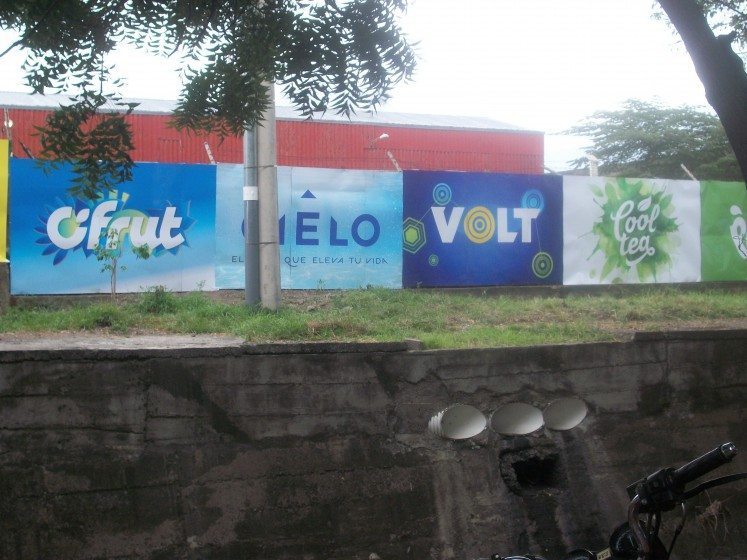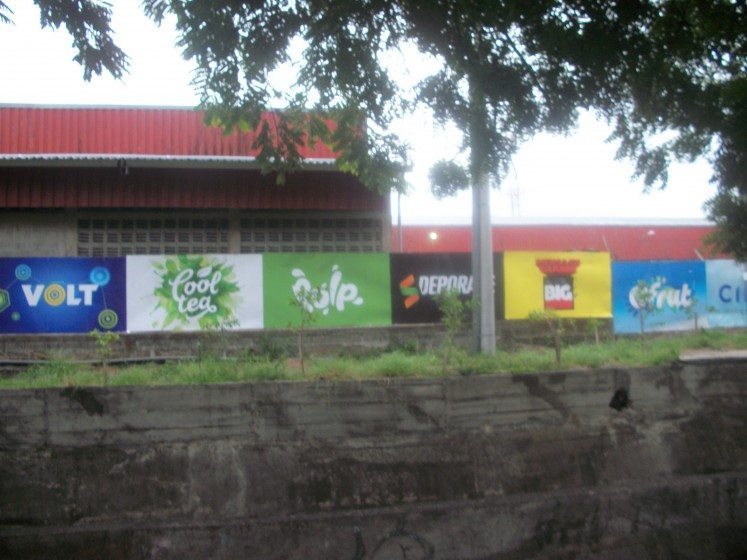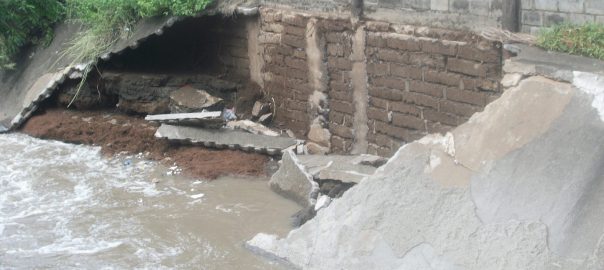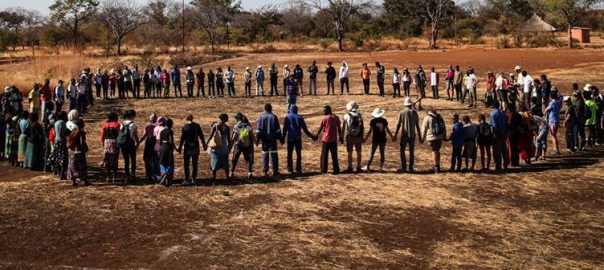We experience the city through our senses. When we walk along city sidewalks or in parks, we can feel the city—we hear sounds, feel the materiality of the pavement or grass, and smell the car exhaust or freshly cut grass. These ‘sensual’ experiences of urban space are referred to as sensory engagements. Sensory engagements are those interactions with places, people, objects, animals, events, etc. as experienced through/with our senses.
We need to take sensory engagements seriously in the city, and in urban planning.
Senses, Bull et al. (2006) write in their introduction of the inaugural issue of the journal The Senses and Society, “mediate the relationship between self and society, mind and body, idea and object. The senses are everywhere. Thus, sensation…is fundamental to our experience of reality.” The senses are part of our bodily states and processes. We generally think of senses in terms of the five main senses: hearing, sight, touch, smell, and taste. But the senses are much more than what we hear, see, touch, smell, and taste. There are also other “senses” that are considered key to our perceptions of the world: pain, balance, sense of motion, sense of time, sense of temperature, and sense of direction.
Moreover, what counts as the “senses” is never universal—it has multiple forms and is constantly changing. Geographer Nigel Thrift writes:
The sensory orders of cultures can vary radically and so, therefore, can the expectations of what counts as perception and experience. …There is no need to think that what we name as the senses has a predetermined or stable character. In all likelihood, the constellation of senses and what we may consequently regard as sensations goes through regular periods of redefinition and re-embedding (2007).
In this regard, the senses cannot always be assumed to be “a ʻnaturalʼ or intrinsic part of bodily experiences.” Rather, they are “highly acculturated” (Longhurst et al. 2009). That is, what counts as the senses and our understanding of sensual experiences is socially constructed. Sensory engagements are different for different people in diverse places: sensations are culturally, historically, and spatially constructed.
The physical experience, of course, is not constructed. To feel is a very material experience in our bodies. These embodied or corporeal ‘senses’ produce and are very much entwined with emotions, feelings, and affect. Emotions can be understood as physical manifestations of sensory experiences. Our sensory engagements with the world and the emotions that we experience depend on where we are, what is around us, language, our bodies, etc.
This article explores the question of how we experience the city through senses and emotions. Paying attention to emotions and sensual experiences enlightens our understanding of what it means to be in, to live in, and to make the city (and world). As such, there is a need in urban planning to take sensory engagements seriously in the city. This is particularly important when considering issues of social and environmental justice.


But acknowledging senses and emotion is not easy. How do we adequately represent the senses and emotions of people, especially since language cannot fully express the depth of feeling and emotional meaning? One way is to start paying attention to how people feel about the city—what are their emotional reactions? How do they feel about where they live, their homes, the areas around their homes? How do they experience everyday urban worlds through their senses—touch, smell, sight, and the myriad other senses? We are very good at paying attention to the visual in cities, but the senses comprise much more than what we see. Urban planners should remember more often that the city is not just a planned space, but a lived space (over four decades ago, Henri Lefebvre point out the importance of everyday living and perceiving in cities as critical to the production of urban space). People have everyday routines that take them through the city—they feel the city in complex ways.
We also need to remember that planning itself is rooted in the sensory engagements of planners (most planners are people living in cities!). The emergence of the field of modern urban planning has its roots in sensory engagements with the city. The industrial cities of Paris and London produced so-called sensory overloads: they were crowded and full of smells (raw sewage, body sweat, animals, etc.), disease, contaminated air, poverty, and a host of other characteristics that produced many emotional responses (disgust, sadness, empathy). Modern urban planning emerged with the aim of addressing the unhealthy sensory environment and so-called moral disorder of the city. The aim of modern urban planning at the time was to rid the city of bad natures—to remove the unhealthy physical and sensory engagements—and to transform the city into a sanitary, ordered space. For example, the creation of urban zoning to separate residential spaces from industry has been a key element in creating an ordered city. The physical and emotional responses to industrial cities were an integral part of the production of knowledge about cities and the creation of what we now know as the modern city. The very people who first implemented what we now know as modern urban planning lived in the industrial city and based their efforts to improve it on their daily experiences. We cannot, therefore, separate emotions and senses from rational planning, since they are intimately entwined.


Of course, modern urban planning did not create perfect cities. Many contemporary cities have far better environments than industrial cities of the turn of the 20th century, but all cities have social and environmental issues—as the articles on TNOC attest. One problem in most cities is that urban planning tends to ignore sensory engagements in the city. If planners or other city officials attempt to address sensory engagements in their ideas and plans, they are usually sidelined in favour of economic concerns. Urban sensory engagements often come into the spotlight when groups of individuals call attention to particular issues that affect them. Environmental justice issues, for example, are in many cases noticeable when people’s physical health is affected, such as asthma from living too close to freeways or health problems from contaminated water (consider the recent case of Flint, MI). Radical physical changes in an individual’s health engender very emotional reactions. Changes in an individual’s everyday environment can also bring about environmental justice concerns; for example, increasingly bad smells from nearby industry or noise from traffic. Such everyday sensory experiences can accumulate and create larger environmental and health issues.
There is also the problem of privileging certain sensory engagements over others. Because sensory engagements are culturally, historically, economically, and spatially constructed, they are different for different people in diverse places. The ordered city that emerged out of the chaotic and dirty industrial city embodied the visions of certain people who had the power and desire to change the city. The idea of participatory urban planning did not exist at the time, and contemporary urban planning in most cities is rarely participatory; as such, the city is designed to create particular sensory environments. If large, green parks are viewed by planners as the best way to create space for urban inhabitants to enjoy nature (the sounds, smells, and visual calmness), these spaces will, perhaps, be privileged over smaller, neighbourhood-level programmes that assist individuals in maintaining trees and other plant life in their own yards. Many studies have examined how large green parks in cities are surrounded primarily by upper-middle and upper class housing; lower-income residents have to travel much farther to be able to enjoy these spaces, reducing their ability to experience sensory engagements with urban nature.
These two issues in contemporary planning—the sidelining of sensory engagements and the privileging of certain sensory environments—are magnified in many cities of the global south, where class differences are highly spatialised. In some cities, the urban landscape has been produced through a combination of modern urban planning and informal development practices. Managua, Nicaragua, is one such city. In the 1950s, modern urban planning sought to zone the city in a similar manner to that of U.S. cities such as Miami and LA, while informal residential, commercial, and industrial development occurred simultaneously. This combination of formal and informal urban development created a patchwork urban landscape with informal residential settlements sandwiched between middle and upper class housing, industry, North American-style strip malls and, more recently, gated communities. The patchwork has resulted in residential neighbourhoods (most often lower income) emerging adjacent to factories. This has been especially common along the lakeshore, where large industry has been located for decades because of its close proximity to Lake Xolotlán (easy access to discharge waste). Zoning in the city has frequently been defined after areas are already well established, resulting in conflicts between residents and industry. Much of this conflict arises out of unwanted sensory environments for residents. I want to explore one example of a current environmental justice conflict that has arisen because of the creation of an uncomfortable and unhealthy sensory environment.
This particular conflict involves the large multi-national bottling company, Big Cola and residents living beside one of the bottling plants in Managua. Last winter, while I was in Managua finishing research on the cultural ecology of Lake Xolotlán, my long-time collaborator invited me to her house. She wanted to show me what has become a serious conflict between her neighbourhood, the city, and Big Cola. The bottling plant is located across a small canal from the residential area of Villa Pedro Joaquín Chamorro. While the plant is across the canal, it is only 5 metres from the door of the first street of houses. However, this canal is the boundary between the residential and industrial zones.
The plant began operating in 2010 and, after several months, residents started to notice annoying sounds and vibrations. The bottling plant operates 24 hours a day and, as such, creates a constant vibration that can be felt inside the houses located along the first two streets of the neighbourhood. Along with the vibrations, the bottling plant generates interminable noises that fluctuate in volume depending on the time of day. The plant also discharges liquid waste into the concrete canal that separates it from the residential area; at certain times of the day, the liquid waste emits strong-smelling odours.

The impacts of the bottling plant are felt in people’s homes throughout the day and night—their everyday lives have been interrupted by the presence of the plant. At first, residents found the pattern of noise and vibration just extremely annoying, but three years after Big Cola began operating this plant, the residents of Villa Pedro Joaquín Chamorro also started to see health effects. Some residents on the street closest to the plant have had their sleep interrupted. The constant noise has, at times, exceeded 170 decibels, which is almost four times the desirable upper limit set by the World Health Organization. As a result, there are already people who are suffering from emotional stress , migraines, insomnia, and tinnitus (a constant ringing or buzzing in the ears). Some residents have also experienced skin and respiratory problems from the emotional stess.
The residents of the neighbourhood have formed a citizens group to try to shut down the plant. They approached the Ministry of Natural Resources and Environment in an attempt to environmental laws. However, the main concerns about vibrations and noise are not ‘strong enough’ to shut down the plant. The Ministry never conducted an environmental assessment when the bottling plant was installed, nor did they grant the company an environmental permit to discharge liquid waste into the canal. As the bottling plant is located in an industrial zone, any excess of untreated waste into the canal only results in a large fine for the company (as per current environmental laws). If the company is fined a certain number of times, there is the potential to shut the plant. At present, the company has not discharged excess amounts. The noise and vibrations do not fall under the jurisdiction of environmental laws, so the residents have little leverage to insist that the plant close. Moreover, the bottling plant creates jobs for dozens of residents of Villa Pedro Joaquin Chamorro and other surrounding neighbourhoods. There is a conflict between economic development, employment, and everyday comfort of residents. In a country where economic development dominates urban interests, arguing to close a bottling plant because of emotional stress and “sensory” pollution (noise and vibrations) is not convincing enough to bring about any change.
The case of Big Cola’s bottling plant and Villa Pedro Joaquin Chamorro broaches a complex question: what counts as environmental pollution in Managua? Since the 1970s, noise pollution has been considered a serious problem in many cities, but what counts as noise has also changed since then. The constant hum of traffic is, for some urban residents, background noise (‘white noise’). Yet, there is growing research and media attention on emotional well-being. Emotional stress is now understand as a key cause of physical ailments. The sensory environments that have been created in cities shape emotional well-being. Urban planners would be wise to pay attention to how people sense the city and the emotional responses to the sounds, smells, sights and other intricate ways of sensing and feeling of humans (and other animals).
Laura Shillington
Managua & Montreal







Leave a Reply